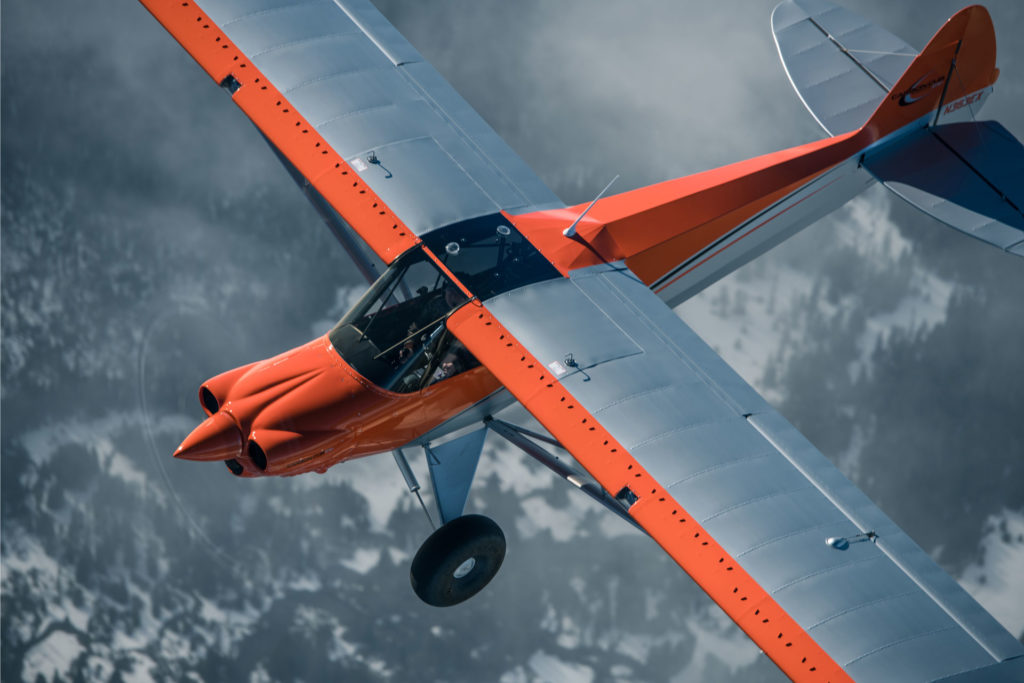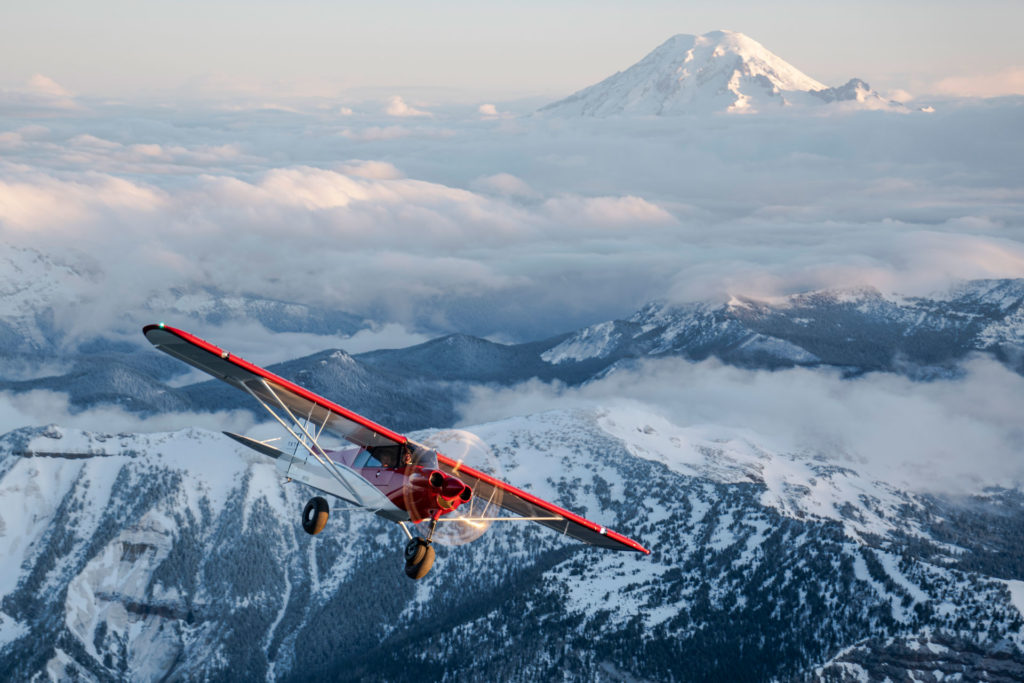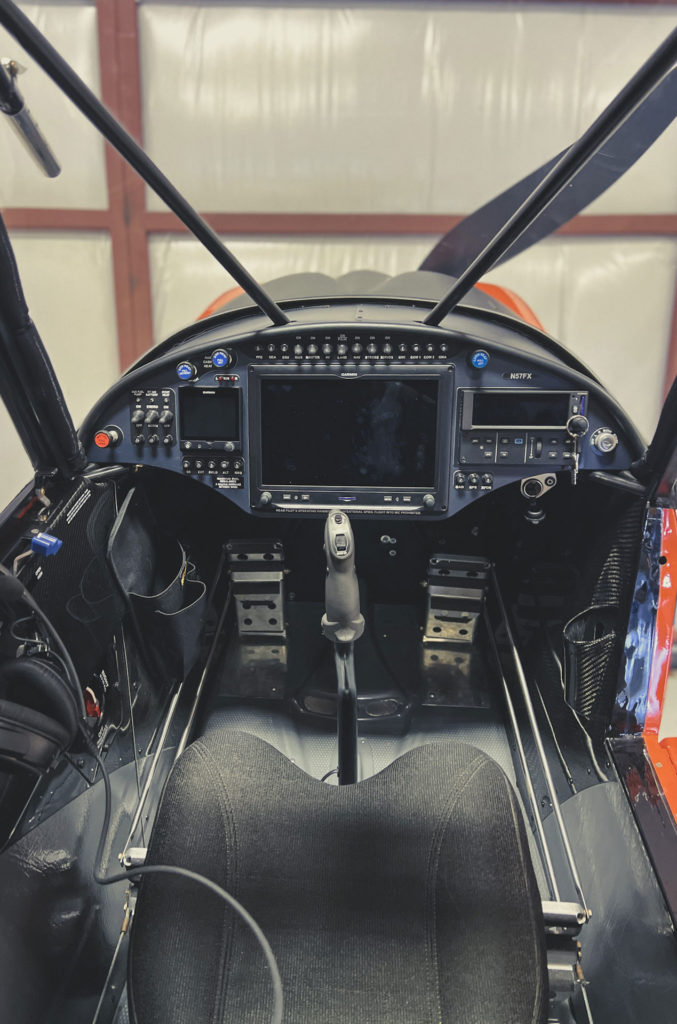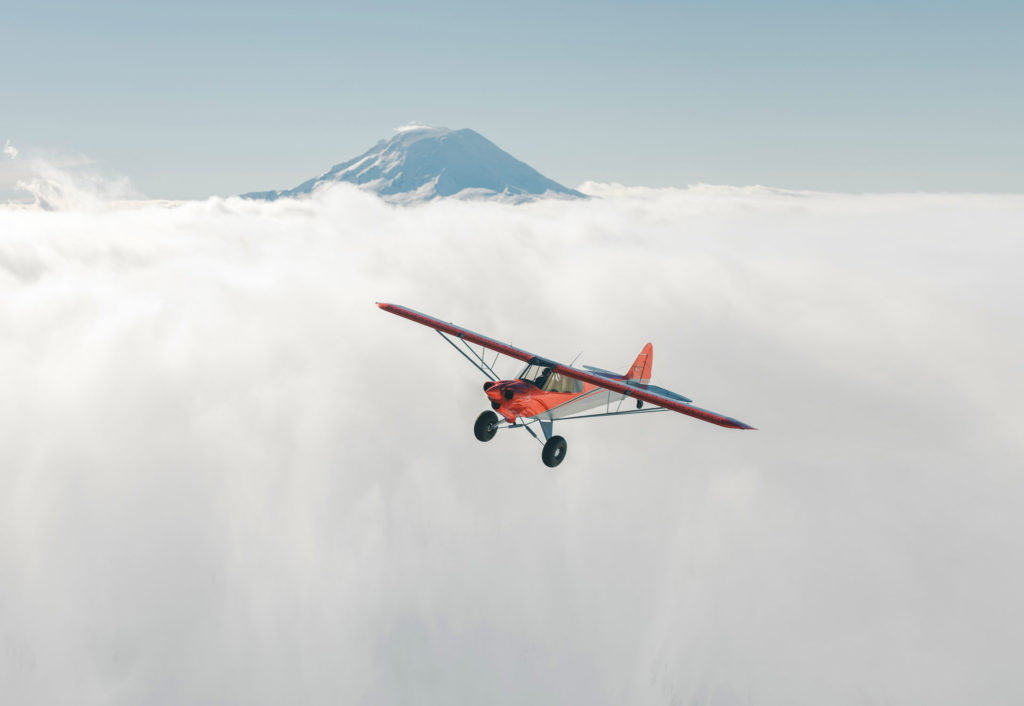Estimated reading time 12 minutes, 14 seconds.
Tucked away in Washington’s Yakima Valley, east of Seattle and the Cascade Range, you’ll find the home of the mighty Carbon Cub. With the Okanogan-Wenatchee National Forest to the north, Mount Rainier to the west, and the rolling plains of Washington to the southeast, it’s no wonder why this one-of-a kind place inspired the design of CubCrafters’ off-airport, dune-buggy airplanes.
What you may not know is that these purpose-built, fat-tired, over-powered, backcountry flying machines are at the center of a general aviation (GA) revival. People around the world are watching as CubCrafters’ popular line of Carbon Cubs push the realm of possibility. YouTube content creators are documenting their Carbon Cub off-airport adventures, landing on riverbanks, sandbars, mountain tops, and farm fields, all while showcasing the magic of aviation and attracting a new audience.

CubCrafters’ roots run deep in the spirit of aviation, as its early beginnings were inspired — like so many of us — by the archetypal Piper Super Cub. The company’s founder, Jim Richmond, started the business in 1980, focusing his efforts solely on rebuilding Super Cubs. A passionate and innovative man, Richmond had a lot of foresight. Over time, he saw an opportunity to improve and modify the aircraft’s original design. He soon shifted gears and fixed his sights on creating a stronger, safer, more powerful aircraft; an aircraft that would bring backcountry aviation into a new era.
In 2004, CubCrafters released its first certified rendition of the Super Cub, dubbed the “Top Cub.” With a 180-horsepower engine, 50-gallon (227-liter) fuel tank, 127-mile-per-hour (204-kilometer-per-hour) cruise speed, and 1,000 pounds (454 kilograms) of useful load, this aircraft was introduced as the better, more robust version of its predecessor. The world of backcountry aviation was better for it. The Top Cub was well received by the aviation community upon its launch, which proved that nothing was untouchable in the GA world; any aircraft was fair game to be re-thought and re-designed.
Since the inaugural Top Cub days, CubCrafters has grown to offer seven different product lines, employ nearly 200 people, and manufacture a combined total of 100 airplanes and kits each year. Better yet, the company is staying true to its roots by offering the services that laid the foundation for the business: Super Cub restorations and repairs.
Sadly, CubCrafters’ founder Richmond passed away in November 2021. He left an incredible legacy behind him and, more importantly, the building blocks for a bright future with a dedicated team to see it through.
“Jim was very clear that he wanted his legacy, CubCrafters, to continue to build airplanes, to continue to innovate, and to continue to grow for many generations to come,” said Patrick Horgan, president and CEO.

The Ins and Outs
Divided into several “camps” — development, production, and delivery — the CubCrafters facilities are scattered across Yakima’s Class Delta airport. A little-known fact is that CubCrafters’ aircraft are almost entirely American made. That’s right! A not-so-common occurrence in today’s day and age. Moreover, the company manufactures the majority of its aircraft parts in-house, right down to the small pieces like bushings — very little is outsourced. And every stage of an aircraft build is a meticulously organized, fine-tuned process… in case you needed a few more reasons to buy a Carbon Cub.
For CubCrafters aircraft owners, the company offers a seven-day Experimental Builder Assist Program, which has gained a lot of interest over the years as it helps bridge the gap between pilot and builder. Carbon Cub FX-3 owner and participant in the builder assist program, Cathy Page, had this to say about the experience: “The build process is absolutely fantastic. This is such a huge opportunity to see all the inner workings of the airplane, and to get my hands on it all.”
CubCrafters has everything in place to assist owners through a rigorous, week-long journey to complete their airplane. In the experimental aircraft category, the U.S. Federal Aviation Administration requires owners to build 51 percent of their aircraft.
“We treat experimental as a certification category, but the aircraft themselves aren’t experiments,” said CubCrafters vice president of sales and marketing, Brad Damm. “What customers get is a new experimental-category airplane and all the advantages that come with that; an airplane that has been fully designed and tested, and then built with factory assistance to meet modern aircraft standards. It’s proving to be a winning combination for us.”
Flying the Latest and Greatest
During our visit with CubCrafters, Yakima received record-setting snowfall that divided the state in two. All mountain pass highways that connect the coast to the interior were closed. Avalanche warnings and a lack of infrastructure to handle the sudden arrival of several feet of snow presented many road blocks — both figuratively and literally. The Skies team was able to make it through the Cascade Range to visit CubCrafters’ headquarters and test fly the Carbon Cub FX-3 and the NXCub — which the GA community has been buzzing about.
The third generation of the Carbon Cub, released in 2017, is the most recent rendition of the EX/FX series aircraft. CubCrafters took all the advancements of the FX-2 and improved them further to create the FX-3. Its design is sleek, consistent with the popular Carbon Cub line.
We got behind the controls of the FX-3, and to say we were impressed is an understatement. With a takeoff distance as short as 90 feet (27 meters), a landing distance of 155 ft (47 m), a climb rate of up to 2,400 ft (730 m) per minute, and a cruise speed of up to 135 mph (217 km/h), it’s hard to find reasons to say, “Nope, not for me!”
The FX-3’s docile stall characteristics make it inherently safer with a stall speed of 37 mph (60 km/h). And its 765-mile (1,230-km) range allows pilots to either fly farther, or stay close to home with the comfort of knowing that they have more time to play in the backcountry before fuel becomes a concern.
The aircraft is powered by a fuel-injected, 186-horsepower CC363i engine and a constant speed propeller. This combination produces more thrust than any of CubCrafters’ previous designs, and makes the FX-3 a hot rod in higher altitudes. With four panel options, owners can choose to outfit their new aircraft with standard avionics and a Garmin GTR 200 comm radio, or treat themselves with a Garmin G3X Touch flight display.

When it comes to flying the aircraft, we found the FX-3 has all of the modern advancements you want, but still feels like a Super Cub in so many ways. It just goes to show that you can’t take the essence of the Super Cub out of CubCrafters’ designs.
Some of the proprietary designs at CubCrafters include the G-Series ailerons and flaps that can be found on the FX/EX-2 and 3 Series Carbon Cubs, as well as the XCub. They are the first slotted flap design at the factory and are meant to improve control balance and roll performance at higher speeds. With the increased power in these aircraft, it was necessary to make the controls less stiff and more responsive.
For the XCub, the aileron push rods are mounted internally, eliminating cables and pulleys. The G-Series flaps are a popular feature on the new series of Carbon Cubs; however, owners can choose to build their aircraft with a flap and aileron design similar to the original Super Cub if they so desire.
The XCub was designed to support a tailwheel or nose wheel configuration. This departure from the traditional tailwheel Cub created quite the stir in the GA community. Despite complaints from purist tailwheel pilots, the nose wheel XCub — better known as the NXCub — is one of the fastest growing segments of CubCrafters’ business.
Aside from having the ability to switch between the two configurations in as little as four hours, there are other benefits that the NXCub offers. Pilots who struggle to stay proficient in a taildragger find the NXCub more approachable; newer GA pilots find it an easy transition from the aircraft they are familiar with. Considering the fact that the nose wheel pilot demographic is much bigger than that of tailwheel pilots, it seems CubCrafters made an incredibly smart business decision. Don’t let the internet trolls fool you… the NXCub is as capable a backcountry aircraft as any other tailwheel design coming off the company’s factory line.
The NXCub has all the same specs as an XCub, and this firecracker of an airplane is the crème de la crème of CubCrafters’ lineup. Released in 2016, the XCub is the most advanced aircraft of the CubCrafters fleet. With more power and increased airspeed, useful load, and range, the XCub Series aircraft pushes CubCrafters’ previous designs to the next level.
The cross-country capable machine has a top speed of 150 mph (240 km/h) and a range of 860 miles (1,384 km). Not only does it offer the best performance, it is also outfitted with top-of-the-line Garmin avionics, including the G3X and autopilot. With all these performance upgrades, there is just one trade-off: take-off distance, which is 30 ft (9 m) longer than the FX-3. A small price to pay for the overall benefits.

The XCub is home to a CC393i powerplant that produces 215 horsepower. Believe us when we say, “She climbs like a banshee.” Our overall opinion after flying the aircraft? The performance is so good you could eat it. The NX/XCubs set the bar pretty high.
As for the price tag… Because CubCrafters offers so many ways to customize the aircraft — so it’s perfectly suited to your personal flying mission — the price can vary anywhere from US$300,000 to $400,000.
With an advanced aircraft lineup, CubCrafters intends to keep innovation at the forefront of its process, and always strive to push the industry into the future. After touring their facility and meeting the executive team, it’s easy to understand where the magic comes from. The staff beam with enthusiasm, so much so that you can feel their passion for the business and the product they manufacture — an important ingredient to the company’s recipe for success.
It’s hard to say if Richmond knew the impact he would have on aviation when he founded the company, and how his ideas would feed into a vibrant new community. We are certainly grateful for it.
Thank you to the CubCrafters team for sharing their passion for aviation with us. We’re wishing them continued success in the years ahead.



Hello,
I owned 7574N a Cessna 185 for many years and flew it from Colorado to Cordova, Alaska for work.
I like your cubs.
Being a carbon aircraft? The only carbon used are in the cowling and some interior parts. Is there a reason why the wing and fuselage doesn’t have more carbon materials